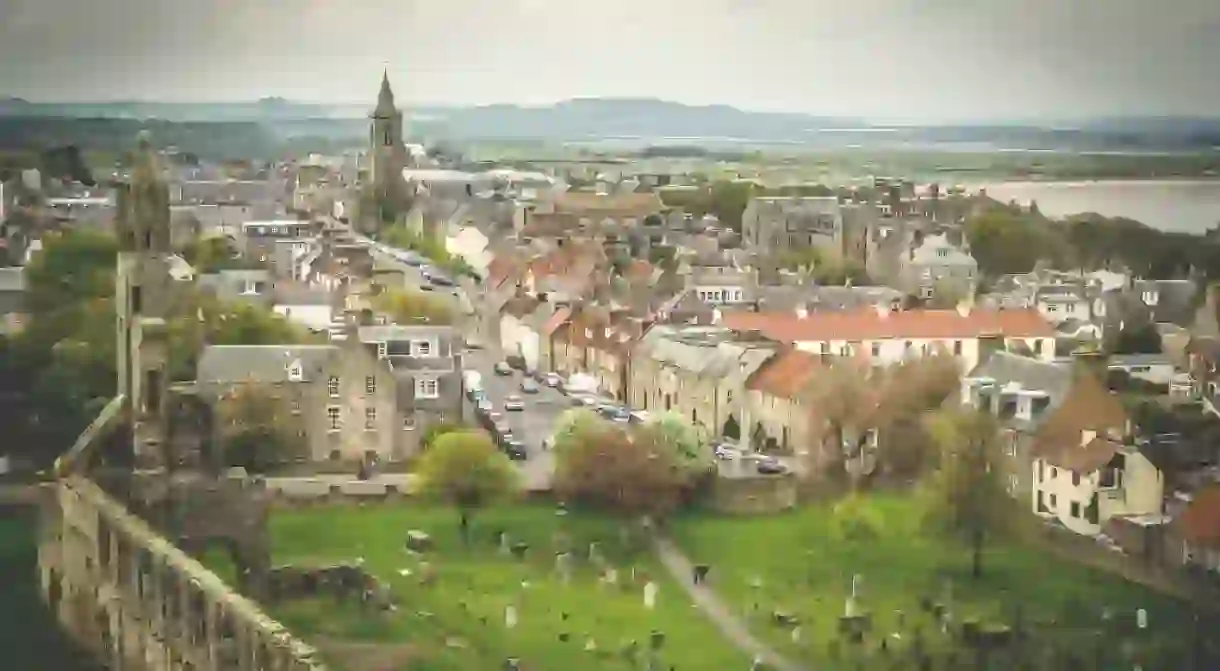A Tour Of St Andrews' Architectural Landmarks

Between its picture-perfect Scottish vernacular architecture punctuating the age-old streets and array of historic ruins shrouded in secrets, St Andrews is a bubble of architectural appeal. Here, Culture Trip takes you on a tour of St Andrews’ best buildings and architectural landmarks.
St Andrews Castle
Ruins

Towering above Castle Sands beach, the ruins of St Andrews Castle are what’s left of a medieval fortress with a notorious reputation. With parts dating back to the 13th century, the castle was frequented by the bishops and archbishops of St Andrews. Each stone still standing today offers a snippet of information from the subterranean siege mine and counter-mine from the 16th century to the spine-tingling bottle dungeon known for its unforgiving ways. Starved from air and wholly grim, many believe John Knox and George Wishart served as prisoners in this horrible hole of a cell.
West Port

Built in 1587, West Port was designed as one of the many eye-opening ports or gates in St Andrews. This entryway to South Street is in impeccable condition and regarded as the ‘best preserved city gate in Scotland’. It’s also one of the few remaining. The style mimics Port Saint-Honore in Paris, a design also impersonated in Edinburgh’s Netherbow, while the middle archway boasts semi-octagonal ‘rownds’ and ‘battling’. Part of the preservation prowess is thanks to the meticulous refurb job in 1843.
St Salvator’s Chapel
Building, Church, University

A Late Gothic worship house founded in 1450 by Bishop James Kennedy, St Salvator’s Chapel, with its towering ceiling, weathered stone and stained glass masterpieces, is the star of the collegiate chapel show at the University of St Andrews. This elaborate chapel proves popular with students, locals and visitors alike and is renowned for its many services. It happens to be Scotland’s only University Chapel with a complete ring of six bells used for the harmonious melody of change ringing. The building has undergone a series of refurbishments from the 1860s to the 20th century.
St Andrews Cathedral
Cathedral, Church, Ruins

Breathtaking and divine, St Andrews Cathedral has played its part in history since the 12th century before it fell to ruins during the Scottish Reformation. A faith-affirming beacon for religious leaders and followers, this age-old stone structure was the largest cathedral ever to grace Scotland. Once more, it served as the headquarters of the Scottish Medieval Church and hosted many bishops and archbishops of high standing over time. The cathedral, as it sits today, hosts some of the prettiest ruins of all time.
The University of St Andrews
Building, Library, University
The aesthetically exquisite University of St Andrews, founded between 1410 and 1413, plays hosts to a harmonious hodgepodge of architectural styles spanning from Gothic revival to brutalist and everything else in between. From its impressive libraries, including the King James, and breathtaking monastic St Salvator’s College, to St Mary’s College complete with The Roundel, a building from the 16th Century and the maze of halls, the buildings at St Andrews University are as diverse as its student body.
Swilcan Bridge
The Swilcan Bridge, as it basks unassumingly over a wee trickle of water between the first and eighteenth fairways on the Old Course, is an unsurpassable St Andrews landmark. This age-old bridge, which is more of a stone structure than a bridge, is a legendary golfing icon and perennially popular photo op spot for golf greats. Built over 700 years ago in an understated Roman Arch style, this famous bridge was constructed to help shepherd’s guide livestock across the burn.

Blackfriars Chapel
Church, Building

A portal to the past, Blackfriars is all that’s left of the former Dominican friary of St Mary, one of Scotland’s multiple Dominican friaries from the Middle Ages. Built as an extension a decade after the church of the Dominican Friars, Blackfriars Chapel now watches passers-by as they go about their day in a very different way. By 1559, the Scottish Reformation led to the infiltration of a related movement who left the friars cruelly ‘expelled from their destroyed place’.
Martyrs' Monument
Memorial

Embellishing the already outstanding views from the prestigious Royal and Ancient Golf Club, the Martyrs’ Monument is a mighty stone sword of a structure built to honour the noble Protestant peoples, who in St Andrews, were martyred from 1520 to 1560 for their beliefs. After an open fundraising campaign, the GoFundMe of that day and age, the monument was built between 1842 and 1843 by architect William Nixon out of local sandstone. A series of inscriptions punctuate the structure, which is comprised of a 10-metre obelisk atop a square plinth.













